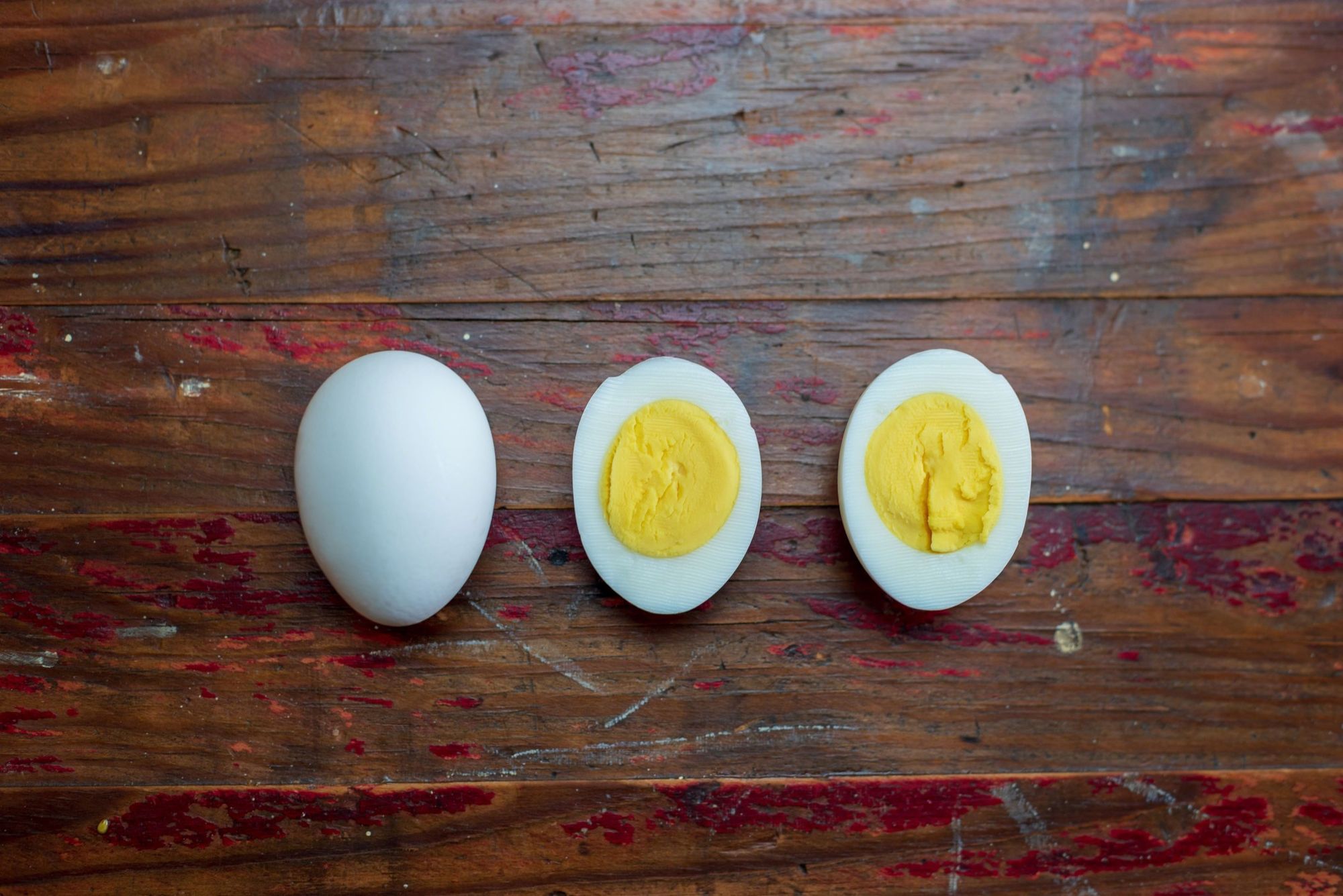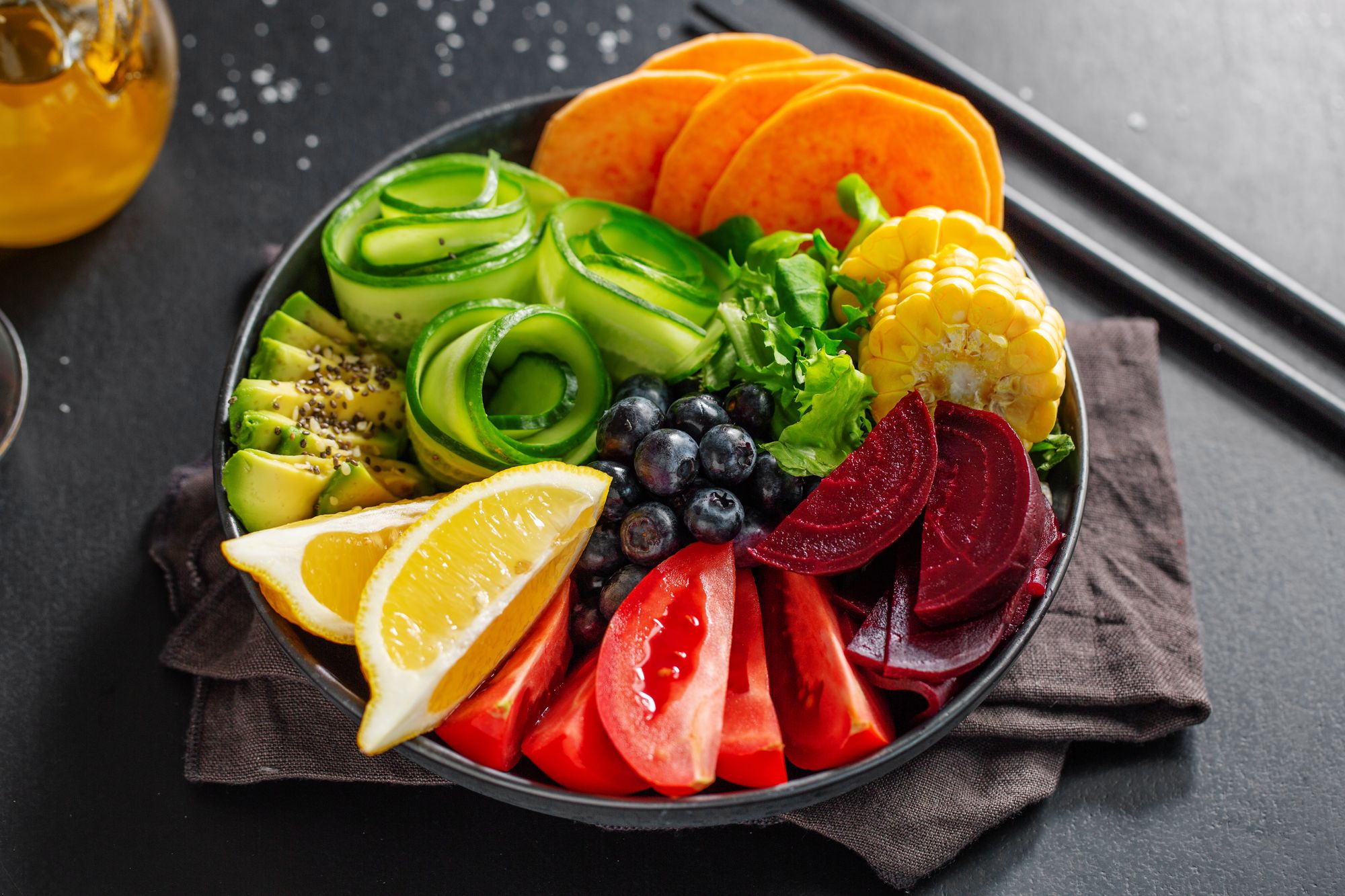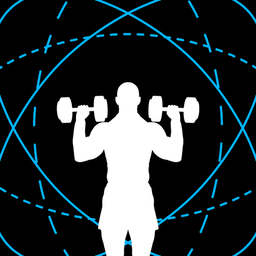How Much Protein Should You Eat to Lose Weight?
FYI ... "as much as possible" isn't the right answer. If that surprises you, here's your chance to learn how much protein to eat to lose weight.

The idea of eating more to lose weight seems absurd … until you realize, oh, we’re talking about ✨ protein ✨. The most satiating macronutrient. A savior of metabolism-boosting muscle mass in a calorie deficit. *distant choral singing*
But. No matter how great protein may be at supporting weight loss, there must be an upper limit to how much you can eat, right?
Because it still counts as calories, after all? Mm. Yes.
How much protein to lose weight?
We’ve always hated the forced, intense thumb/finger workout associated with online recipes (“I don’t want to know about your life-changing experience in Thailand! Just tell me how to cook Holy Basil Chicken Stir-Fry already!”).
So, we’re going to front-load the answer.
How much protein you need to lose weight depends on your body fat percentage; if 2 individuals weigh the same, the person with less muscle won’t need as much protein.
So, if you have a body fat percentage of:
And if you have a body fat percentage that falls somewhere in between?
Research suggests that you’ll want to strive for a minimum daily protein intake of 1.6 grams per kilogram of body weight.
Of course, this doesn’t mean you should reach for the protein stars and aim for a 2.4 grams per kilogram of body weight daily intake.
While necessary for relatively leaner individuals in a calorie deficit for muscle mass preservation, an overly high intake, in your case, would come at the expense of energy-giving carbs and hormone-health-promoting fats.
In other words, don’t stray too far from the range of 1.6 to 2.0 grams per kilogram of weight.
<15% for men; <25% for women: 2.0 to 2.4 grams per kilogram of body weight
>30% for men; >40% for women: [Your height in cm] grams
Anything in between those ranges: 1.6 to 2.0 grams per kilogram of body weight
“Omg, that’s a lot of protein???” Relax and check these out:



It’s not just about how much, but also about …
Regardless of your body fat percentage, the primary outcome you wish to achieve through eating enough protein is the same: lean body mass preservation and/or even growth.
Meaning?
In addition to quantity, you’ll also need to create an optimal “hypertrophy environment” by doing 2 things. One is choosing high-quality proteins. The second is ensuring adequate protein distribution.
#1: Protein quality
A protein’s quality stems from 2 factors:
- Digestibility: FYI, protein digestibility refers to the percentage of protein available for absorption (i.e., for the body) after it has been broken down.
- Amino acids profile: Every protein source contains a variety of amino acids. Your body makes use of 20 amino acids, and there are 9 — known as “essential amino acids” or EAAs — it cannot make itself (i.e., you must get these from your diet).
Taken together, this means a high-quality protein will be one that 1) has a high digestibility score and 2) contains all 9 EAAs (i.e., a “complete” protein). So, what are a few examples of high-quality protein sources?
TBH, it’s your usual animal-derived suspects:
- Meat (e.g., chicken and beef)
- Fish
- Dairy products
- Eggs
- Protein powder
Now, plant-based folks, before you give us the stink-eye …

- Yes, a plant-based diet can result in similar muscle growth outcomes as an animal-based one provided
- You eat enough protein from a variety of sources and …
There’s a final “criteria” to hit, which applies to animal-based diets, too, so let’s talk about that now.
#2: Protein distribution
To understand the optimal protein distribution for muscle preservation and growth, let’s look at 3 studies:
Um??? If you have no idea what to do with all the information, don’t worry. We’re here to help. It simply means that based on the evidence we have:
- 2 protein doses daily is slightly better than 1
- 3 protein doses daily is probably marginally better than 2
- You don’t have much to gain going beyond 3 protein doses daily
I.e., you’ll do best splitting your daily protein intake between 2-3 meals.
Are you actually eating enough protein?
Reality check: knowing how much protein you should eat to lose weight (plus where that protein comes from and how it’s distributed) is different from doing it in real life.
If you’d like accountability, why not check out GymStreak?
Log your meals and keep track of your protein intake in real time. Psst: it’s also an AI-powered workout planner that’ll tailor your training sessions to your fitness experience and goals.
Check it out here:
Workout Programming + Nutrition Tracking, Off Your Hands
*sigh of relief* We'll guide you through it all — step-by-step. Just download the app, and you'll be making progress toward your dream body like never before.
References
FoodData Central. https://fdc.nal.usda.gov/fdc-app.html#/food-details/171477/nutrients. Accessed 8 Feb. 2024.
Hevia-Larraín, Victoria, et al. “High-Protein Plant-Based Diet Versus a Protein-Matched Omnivorous Diet to Support Resistance Training Adaptations: A Comparison Between Habitual Vegans and Omnivores.” Sports Medicine (Auckland, N.Z.), vol. 51, no. 6, June 2021, pp. 1317–30. PubMed, https://doi.org/10.1007/s40279-021-01434-9.
Heymsfield, S. B., et al. “Voluntary Weight Loss: Systematic Review of Early Phase Body Composition Changes.” Obesity Reviews: An Official Journal of the International Association for the Study of Obesity, vol. 12, no. 5, May 2011, pp. e348-361. PubMed, https://doi.org/10.1111/j.1467-789X.2010.00767.x.
Hoffman, Jay R., and Michael J. Falvo. “Protein – Which Is Best?” Journal of Sports Science & Medicine, vol. 3, no. 3, Sept. 2004, pp. 118–30.
Meessen, Emma C. E., et al. “Differential Effects of One Meal per Day in the Evening on Metabolic Health and Physical Performance in Lean Individuals.” Frontiers in Physiology, vol. 12, 2021, p. 771944. PubMed, https://doi.org/10.3389/fphys.2021.771944.
Monteyne, Alistair J., et al. “Vegan and Omnivorous High Protein Diets Support Comparable Daily Myofibrillar Protein Synthesis Rates and Skeletal Muscle Hypertrophy in Young Adults.” The Journal of Nutrition, vol. 153, no. 6, June 2023, pp. 1680–95. PubMed, https://doi.org/10.1016/j.tjnut.2023.02.023.
Taguchi, Motoko, et al. “Increasing Meal Frequency in Isoenergetic Conditions Does Not Affect Body Composition Change and Appetite During Weight Gain in Japanese Athletes.” International Journal of Sport Nutrition and Exercise Metabolism, vol. 31, no. 2, Mar. 2021, pp. 109–14. PubMed, https://doi.org/10.1123/ijsnem.2020-0139.
Walberg, J. L., et al. “Macronutrient Content of a Hypoenergy Diet Affects Nitrogen Retention and Muscle Function in Weight Lifters.” International Journal of Sports Medicine, vol. 9, no. 4, Aug. 1988, pp. 261–66. PubMed, https://doi.org/10.1055/s-2007-1025018.
Yasuda, Jun, et al. “Evenly Distributed Protein Intake over 3 Meals Augments Resistance Exercise-Induced Muscle Hypertrophy in Healthy Young Men.” The Journal of Nutrition, vol. 150, no. 7, July 2020, pp. 1845–51. PubMed, https://doi.org/10.1093/jn/nxaa101.


